
A spreadsheet listing U.S. Border Patrol nationwide apprehensions by citizenship and sector in FY2018TD through October. The data includes deportable aliens only.
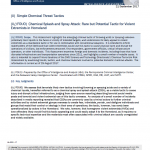
We assess that terrorists likely view tactics involving throwing or spraying acids and a variety of chemical liquids, hereafter referred to as a chemical spray and splash attack (CSSA), as a viable tactic to cause injury and disrupt critical infrastructure, judging from open source reporting describing terrorist social media posts and terrorist and violent extremist use of this tactic overseas. An analysis of a small number of incidents described in media reporting revealed that CSSAs are commonly used by criminal actors to further criminal activities and by violent extremist groups overseas to create fear, intimidate, punish, and disfigure individuals and groups that resist their control or ideology in their area of operations; the tactic, however, has rarely been operationalized by actors in the Homeland. We note, however, that homegrown violent extremists (HVEs) and lone offenders likely would find this tactic appealing and could easily adapt it to the Homeland, as it requires no specific technical expertise and the materials most often associated with criminal attack are usually unregulated and widely available.
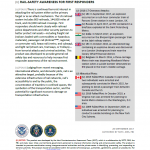
There is continued terrorist interest in attacking the rail system either as the primary target or as an attack mechanism. The US railroad system includes 800 railroads, 144,000 miles of track, and 212,000 railroad crossings. First responders should work closely with railroad police departments and other security partners to better protect rail assets—including freight rail (railcars loaded with commodities or hazardous materials), passenger rail (Amtrak, regional, or commuter rail), heavy rail (metro, and subway), and light rail (street cars, tramways, or trolleys)—from terrorist attacks and criminal activities. This product was developed to provide general rail safety tips and resources to help increase first responder awareness of the rail environment.

In the pluralized, multipolar world, in which military and economic sources of power are widely distributed and technologies are making nation states increasingly more porous, the US and its partners face significant challenges on how best to adapt and thrive in a period of revolutionary changes. These factors may change the way US analysts, planners, and operators evaluate approaches in order to affect and direct the outcomes of military operations. To date, such courses of actions to a large extend have focused on compelling adversaries through the threat or application of force to achieve victory (i.e., “control”). In this changing geopolitical/technical landscape, it is increasingly clear that the DOD needs complement “control” with an explicit focus upon “influence” factors and forces that produce desired behavioral outcomes across complex and intermeshed human and technical systems.
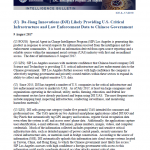
SIP Los Angeles assesses with moderate confidence that Chinese-based company DJI Science and Technology is providing U.S. critical infrastructure and law enforcement data to the Chinese government. SIP Los Angeles further assesses with high confidence the company is selectively targeting government and privately owned entities within these sectors to expand its ability to collect and exploit sensitive U.S. data.
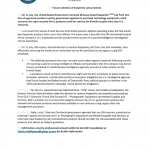
On 11 July, the United States Government removed Moscow-based Kaspersky Lab from two lists of approved vendors used by government agencies to purchase technology equipment, amid concerns the cyber security firm’s products could be used by the Kremlin to gain entry into U.S. networks. Last month the Senate Armed Services Committee passed a defense spending policy bill that would ban Kaspersky products from use in the military. The move came a day after the FBI interviewed several of the company’s U.S. employees at their private homes as part of a counterintelligence investigation into its operations.
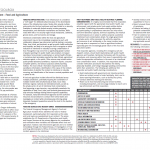
Food and agriculture infrastructure is a $1 trillion industry, almost entirely under private ownership and comprises an estimated 2.1 million farms, 935,000 restaurants, and more than 200,000 registered food manufacturing, processing, and storage facilities. Intentional contamination of the food supply could have significant public health and economic consequences depending on the commodity, the agent used, and where in the supply chain the contaminant was added. This product provides first responders and private-sector stakeholders an awareness of the complex operating environment that may result from intentional contamination of the food supply and identifies key collaborative partners and indicators to minimize the risk of an intentional attack on the food supply.
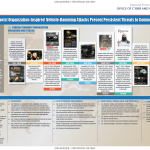
assesses the increase in the number of vehicle-ramming attacks since January 2016 indicates Foreign Terrorist Organization (FTO) messaging efforts are probably resonating with violent extremists and will most likely continue in the near term. FTO-inspired violent extremists will probably continue to plan and engage in vehicle-ramming attacks against Western-based mass gathering and public venues since this tactic often requires minimal training, expertise, and preoperational planning. Since January 2016, eight FTO-inspired vehicle-ramming attacks have occurred in Western countries. OCIA identified three common characteristics among these attacks: targeting of public venues or mass gatherings; use of secondary weapons; and lack of observable indicators immediately before the attack.
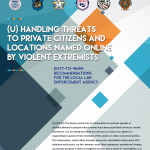
The fusion center has no information to indicate specific or credible threats to people whose names have been published online by violent extremists. You are being provided this advisory to assist your agency in responding to queries from members of the public or other concerned parties. This information, which often includes personally identifiable information (PII) obtained maliciously via the Internet, most likely represents aspirational threats. Its primary purpose is likely to heighten anxiety and a sense of vulnerability. It is unlikely that violent extremist-inspired individuals in the United States will target people identified online, but this cannot be ruled out entirely.
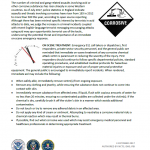
The number of criminal and gang-related assaults involving acid or other corrosive substances has risen sharply in some Western countries. As of July 2017, police statistics in England indicate assaults and threats involving corrosives have risen from 183 in 2012 to more than 500 this year, according to open source reporting. Although there has been minimal specific interest by terrorists in acid attacks to date, we judge the increase in criminal incidents coupled with recent English-language terrorist messaging encouraging attacks using acid may spur opportunistic terrorist use of the tactic, underscoring the potential threat and importance of an immediate on-scene emergency response.
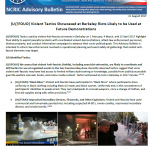
Tactics used by violent Anti-fascists at events in Berkeley on 1 February, 4 March, and 15 April 2017 highlight their ability to exploit peaceful protests with coordinated violent demonstrations, attack law enforcement personnel, destroy property, and conduct information campaigns to advance their socio-political goals. This Advisory Bulletin is intended to inform law enforcement involved in operational planning and event safety at gatherings that violent anti-fascist elements may target.
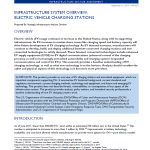
Electric vehicle (EV) usage continues to increase in the United States, along with its supporting infrastructure. As EVs increase in market share, issues like charging speed and battery capacity will drive future development of EV charging technology. As EV demand increases, manufacturers will continue to develop, build, and deploy additional Internet-connected charging stations and new connected technologies to satisfy demand.
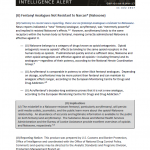
Contrary to recent news reporting, there are no fentanyl analogues resistant to Naloxone. News reports indicated a “new” fentanyl analogue, acrylfentanyl, was “extremely powerful” and implied it resisted Naloxone’s effects. However, acrylfentanyl binds to the same receptors within the human body as fentanyl, meaning correctly administered Naloxone is effective against it.
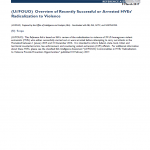
This Reference Aid is based on I&A’s review of the radicalization to violence of 39 US homegrown violent extremists (HVEs) who either successfully carried out or were arrested before attempting to carry out attacks in the Homeland between 1 January 2015 and 31 December 2016. It is intended to inform federal, state, local, tribal, and territorial counterterrorism, law enforcement, and countering violent extremism (CVE) officials. For additional information about these HVEs, please see the classified I&A Intelligence Assessment “(U//FOUO) Commonalities in HVEs’ Radicalization to Violence Provide Prevention Opportunities,” published 10 February 2017.

This case study is an examination of behaviors that resulted in a disrupted terrorist attack, revealing a cycle of planning and preparation that could provide indicators for preventing similar attempts. The terrorist attack planning cycle is not a static, linear process but rather could begin in any of the several stages with variances in details, sequence, and timing. An individual’s mobilization to violence often provides observable behavioral indicators such as, pre-attack surveillance, training, and rehearsal. The indicators potentially allow third-party observers and law enforcement to identify individuals moving to violence, circumstances that may allow for disruption of planned attacks. This product is intended to cultivate an awareness of the planning cycle among stakeholders for identification, mitigation, and disruption of attack planning.
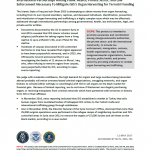
The Islamic State of Iraq and ash-Sham (ISIS) is attempting to obtain money from organ harvesting, including from its own injured members, captives, and deceased individuals. Identification, prevention, and interdiction of organ harvesting and trafficking is a highly complex issue which may be effectively addressed through international partnerships among governmental, health, law enforcement, legal, and private-sector entities.
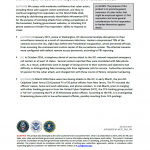
We assess with moderate confidence that cyber actors, including those who support violent extremism, are likely to continue targeting first responders on the World Wide Web, including by distributing personally identifiable information (PII) for the purpose of soliciting attacks from willing sympathizers in the homeland, hacking government websites, or attacking 911 phone systems to hinder first responders’ ability to respond to crises.
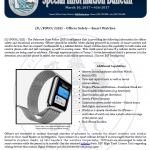
The Delaware State Police (DSP) Intelligence Unit is providing the following information for officer safety and situational awareness. Officers should be mindful, when placing prisoners in custody, of smart watches and similar devices that can connect via Bluetooth to a cellular device. Smart watches have the capability to both make and receive phone calls and text messages, as well as erasing same. This could cause an issue if a cellular device and it’s contents are being used as evidence. Through experimentation at Troop 7, it was determined that if a prisoner is in the detention area and the phone is seized, the watch could still be operational.
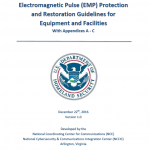
The EMP protection guidelines presented in this report were initially developed by Dr. George H. Baker, based on his previous work where he led the Department of Defense program to develop EMP protection standards while at the Defense Nuclear Agency (DNA) and the Defense Threat Reduction Agency (DTRA). He is currently serving as a consultant to the Department of Homeland Security (DHS) and is emeritus professor of applied science at James Madison University (JMU). He presently serves on the Board of Directors of the Foundation for Resilient Societies, the Board of Advisors for the Congressional Task Force on National and Homeland Security, the JMU Research and Public Service Advisory Board, the North American Electric Reliability Corporation GMD Task Force, the EMP Coalition, and as a Senior Scientist for the Congressional EMP Commission.
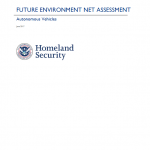
Autonomous vehicles collect and process data from their environments, taking actions that can either help or replace drivers. OCIA assesses that these vehicles will benefit society by improving road safety and reducing deaths, injuries, and costs associated with collisions. Autonomous vehicles will also likely lead to a decrease in traffic congestion, decreasing fuel consumption and emissions per mile, and helping save drivers’ money and time. However, as vehicles become increasingly connected and a part of the Internet of Things, vulnerabilities and potential consequences are likely to increase unless cybersecurity is better integrated into vehicle design and development. Legal and regulatory gaps exist on issues such as collision liability and safety standards; if these gaps are not addressed, cities and states might implement their own laws and regulations, creating inefficiencies for automobile manufacturers, shipping companies, and drivers. Moreover, fully autonomous vehicles will likely have an adverse effect on the professional driver workforce when bus, taxi, and truck drivers are eventually replaced.
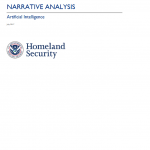
Artificial Intelligence (AI) is an emerging risk that will affect critical infrastructure (CI) as it becomes common throughout the United States. The purpose of this research paper is to analyze the narratives about AI to understand the prominence of perceived key benefits and threats from AI adoption and the resulting implications for infrastructure security and resilience. Narratives are strongly held beliefs, and understanding them will help decision makers mitigate potential consequences before they become significant problems.

In January 2016, EPIC published Intelligence Note 02303-16a, this product provided analysis of data provided by the Drug Enforcement Administration (DEA) and open source reporting that indicated Transnational Criminal Organizations (TCOs) continued to operate and profit from marijuana sales in legalized U.S. marijuana markets. EPIC research further showed that legalization of marijuana in some U.S. markets had not adversely impacted TCO profitability in marijuana markets, and that the effort of legalization had conversely brought new opportunities for illicit profits from marijuana sales. As of January 2017, EPIC research indicates that TCOs continue to exploit legalized marijuana markets in the United States.
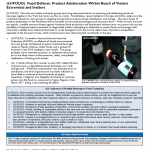
Terrorist and violent extremist groups have long expressed interest in poisoning and adulterating food and beverage supplies in the West but rarely use this as a tactic. Nonetheless, recent incidents in Europe and Africa underscore the continued interest by some groups in targeting food products at point-of-sale, distribution, and storage. The mere threat of product adulteration in the Homeland almost certainly would cause psychological and economic harm. While we have not seen any specific, credible terrorist threats against Homeland food production and distribution infrastructure, we cannot rule out the possibility of inspired violent extremists or disgruntled insiders attempting to adulterate or poison food and beverages with commonly available toxic industrial chemicals or crude biological toxins due to the relative ease of product manipulation, especially at the last point of sale, which criminal actors have demonstrated consistently in the past.